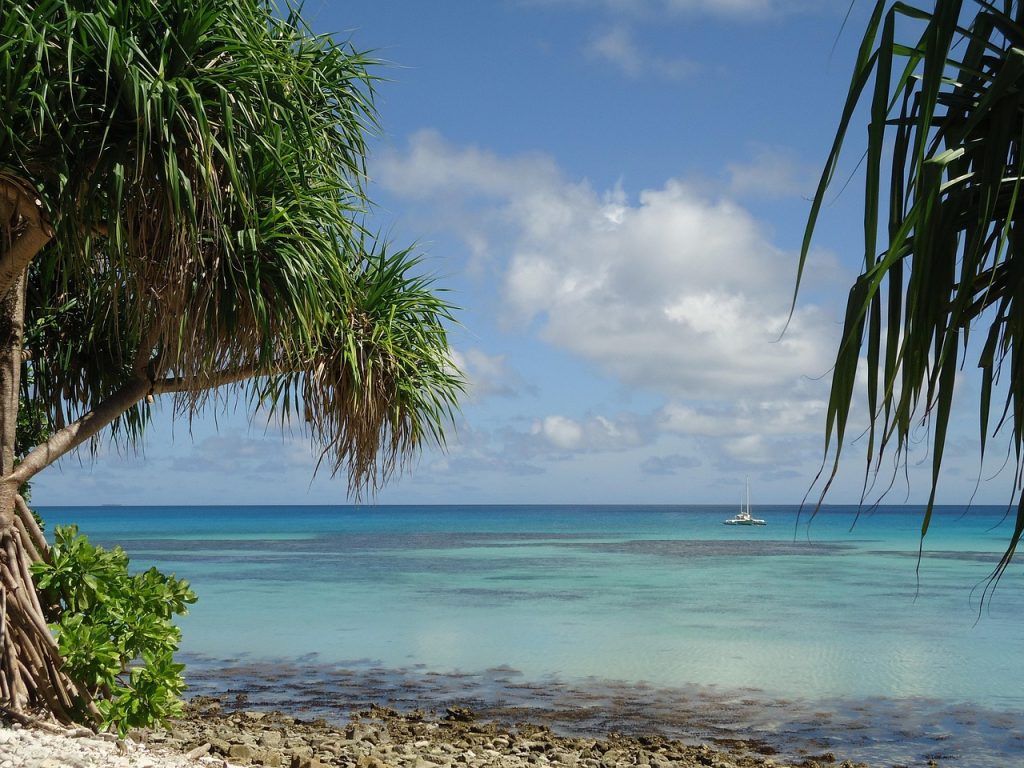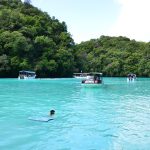Tucked away in the remote Pacific, Tuvalu is one of the smallest and least-visited nations on Earth—a place where traditional Polynesian culture thrives, and time seems to stand still. With pristine lagoons, palm-fringed atolls, and a laid-back way of life, this hidden gem offers a true off-the-grid escape. Here’s everything you need to know about getting to Tuvalu and experiencing its untouched beauty.

How to Get to Tuvalu
By Air (The Only Practical Option)
Tuvalu’s lone international airport, Funafuti International Airport (FUN), is the sole gateway to the country. Flights are infrequent, so planning ahead is essential.
Airlines Serving Tuvalu:
- Fiji Airways – The only international carrier flying to Tuvalu, operating twice weekly from Suva (Fiji) (~2.5-hour flight).
- Connections: Fly into Nadi (Fiji) from Australia, New Zealand, or the US, then take a domestic flight to Suva for the Tuvalu leg.
Note: There are no direct flights from the US, Europe, or Asia—travelers must route through Fiji.
By Sea (Extremely Rare & Unpredictable)
- Cargo Ships: A few vessels like the MV Nivaga II or MV Manú Folau occasionally take passengers from Fiji or Kiribati, but schedules are unreliable, and voyages can take 5-10 days.
- Private Yachts: Some adventurers sail to Tuvalu, but permits and logistics are complex.
Getting Around Tuvalu
Domestic Transport (Limited but Simple)
Tuvalu consists of nine tiny atolls, but nearly all services are on Funafuti, the main island.
- Walking & Bicycles: Funafuti is small (12km long but just a few hundred meters wide)—many locals walk or bike.
- Motorbikes & Scooters: Rentals are available in Funafuti (~AUD $20/day).
- Taxis: A few operate on Funafuti (no meters; negotiate fares).
- Boats: For visiting outer islands, charter a local fishing boat (expensive and weather-dependent).
Inter-Island Travel (Challenging but Possible)
- Government Ships: Infrequent boats (like MV Talamoana) visit outer islands, but schedules are erratic.
- Private Charters: Expensive and rare—only for dedicated explorers.
Top Places to Visit in Tuvalu
1. Funafuti (The Main Atoll)
- Funafuti Lagoon (Te Namo): A stunning turquoise lagoon perfect for swimming, kayaking, and snorkeling.
- Fongafale Island: The heart of Tuvalu, home to the airport, guesthouses, and the Philatelic Bureau (a must for stamp collectors).
- David’s Drill Site: A remnant of WWII when the US military attempted (and failed) to dig for oil.
2. Funafuti Conservation Area (Protected Marine Paradise)
- Six uninhabited islets with pristine beaches, seabird colonies, and vibrant coral reefs.
- Snorkel with tropical fish and sea turtles in crystal-clear waters.
3. Outer Islands (For the Adventurous)
- Nanumea: The northernmost atoll with WWII relics and traditional thatched homes.
- Vaitupu: Home to Tuvalu’s largest school and a giant clam sanctuary.
- Nukufetau: A remote atoll with shipwrecks and incredible fishing.
Travel Tips for Tuvalu
- Visa: Most nationalities (including US, EU, Australia, NZ) get a free 30-day visa on arrival.
- Currency: Tuvaluan Dollar (TVD) & Australian Dollar (AUD). Cash is king—credit cards are rarely accepted.
- Language: Tuvaluan (Polynesian) and English (widely spoken).
- Best Time to Visit: May-October (dry season; cooler temps). Avoid November-April (cyclone season).
- Internet & Connectivity: Extremely limited—embrace the digital detox!
- Health & Safety: No major risks, but bring reef-safe sunscreen and mosquito repellent.
Final Thoughts
Tuvalu is one of the last untouched frontiers of travel—a place where you can disconnect from the modern world and experience genuine Polynesian hospitality. With its fragile existence threatened by rising sea levels, visiting Tuvalu is also a chance to witness a vanishing way of life.
Ready for the adventure of a lifetime? Pack light, bring patience, and prepare to fall in love with the world’s most secluded paradise. 🌴✈️
“In Tuvalu, you don’t just visit a country—you discover a hidden world.”

